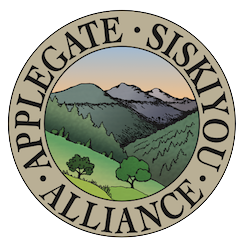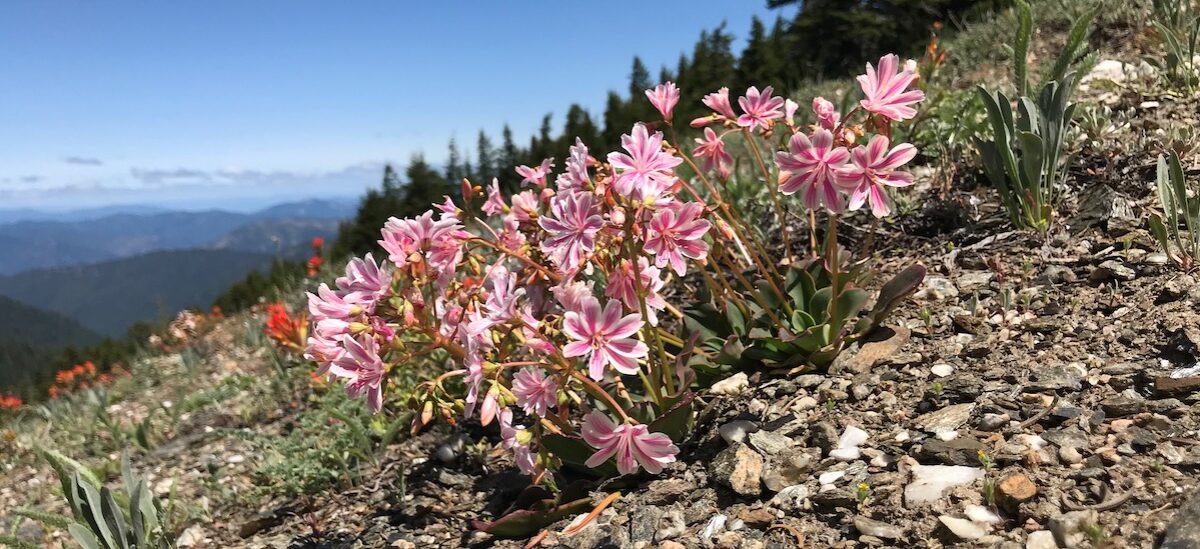What looks like a road, acts like a road, was built as a road, and has similar ecological impacts as a road, but is supposedly not a road? A so-called “temporary” road!

We often hear federal land management agencies (BLM & Forest Service) speak of “temporary roads,” but what does that mean? Temporary roads are often proposed and constructed during logging projects on public land as a way to provide access into logging units. After the logging is completed the so-called temporary road is supposed to be decommissioned and the area restored. The agencies tout temporary roads as a less ecologically damaging alternative to permanent roads; however, temporary roads have long-lasting ecological impacts that are far from temporary.
Temporary roads are often utilized by full-sized logging trucks or other large machinery to access commercial logging units or other land management activities. Although these roads were built and designed as roads, our federal land managers do not account for temporary roads when quantifying road density or considering road related impacts to nearby watersheds. This allows them to build more roads, while masking the cumulative impacts associated with the construction of temporary roads.
Although so-called temporary roads are not administratively considered roads, they have very similar impacts to soils, hydrology, native plant communities, water quality and noxious weed spread. In reality, the only thing temporary about these roads is the agency’s use of them. Temporary roads are not roads where the impact or footprint has disappeared from the landscape. Instead, the agency defines these roads as “temporary” simply because they do not intend to maintain them as open roads following the proposed land management activities.

Despite the lasting impacts to nearby watersheds and the supposedly temporary nature of these roads, they will be treated as roads and reopened in the next timber sale and/or fire suppression effort. Temporary roads are also often driven by off-road vehicle enthusiasts and become sources of noxious weed spread, creating a legacy of lasting impacts.
Temporary roads can also create long-term impacts to soils, ranging from compaction to increased soil erosion, and even catastrophic slope failure. When located near streams they can be a significant source of sedimentation and become chronic impacts to water quality and fisheries.
Recently ANN went up to Bear Wallow Ridge to inspect a so-called temporary road built across our publicly owned Forest Service land to access timber and property owned by The Murphy Timber Company.


In the summer of 2017, during the Abney Fire, a small piece of private timber land in the Whisky Creek watershed burned at largely low severity. Following the Abney Fire, the Murphy Timber Company applied for a timber harvest plan to log off the fire-affected forests of Whisky Creek. The Oregon Department of Forestry promptly approved their harvest plan to clearcut a large portion of the property, despite the fact that many of trees were alive and green. The timber company then requested approval with the Forest Service to build a new “temporary” road and log landing.
Unfortunately, the Forest Service granted the Murphy Timber Company a right-of-way to build new road and a large log landing near the summit of Bear Wallow Ridge and at the margin of the Stricklin Butte Roadless Area. The area contained rock gardens filled with uncommon native wildflowers, montane chaparral and regenerating knobcone pine stands on the southern face of Bear Wallow Ridge.
The agency also approved the removal of numerous large, fire resistant trees on Forest Service land, as well as a larger number of fire-killed snags. These trees were located within the skyline yarding corridors. These corridors were cleared of both live and dead trees to facilitate the yarding of commercial timber from the private Murphy Timber land below.

At the log landing, thousands of logs were processed, leaving behind a thick mound of woody debris. When large slash piles were burned, this material caught on fire and smoldered into the earth, causing portions of the landing to collapse. The soils within the massive burn piles were burned at incredibly high intensity. The massive slash piles burned and badly damaged the soil profile, consuming the soil’s organic matter and creating vast ash and soot beds. These large piles have created hydrophobic conditions and the heat from these fires has turned the topsoil into dust — all on our public land for the profit of a private timber company.
Almost one year after building the road, and despite Forest Service “restoration” activities and decommissioning efforts, the effects of the so-called temporary road are very evident. Although the agency successfully seeded some native grasses and forbs within the decommissioned roadbed, the temporary road still consists of largely barren, churned earth. The open, disturbed soil is particularly susceptible to opportunistic noxious weed spread, which are all ready present on an existing long landing to the west. Currently large portions of the roadbed have not revegetated and it is hard to say what species will recolonize the unvegetated areas.

The photographs in this post demonstrate the impact of just one temporary road in the Applegate. There are literally hundreds of miles of temporary roadbeds scattered across the Applegate River Watershed and throughout southern Oregon — and more are proposed in projects each year. The land management agencies tell us that these roads and their impacts are temporary, but evidence on the landscape tells a different story. Next time they try to tell you that a proposed road is temporary, tell them that there is no such thing as a “temporary” road.

